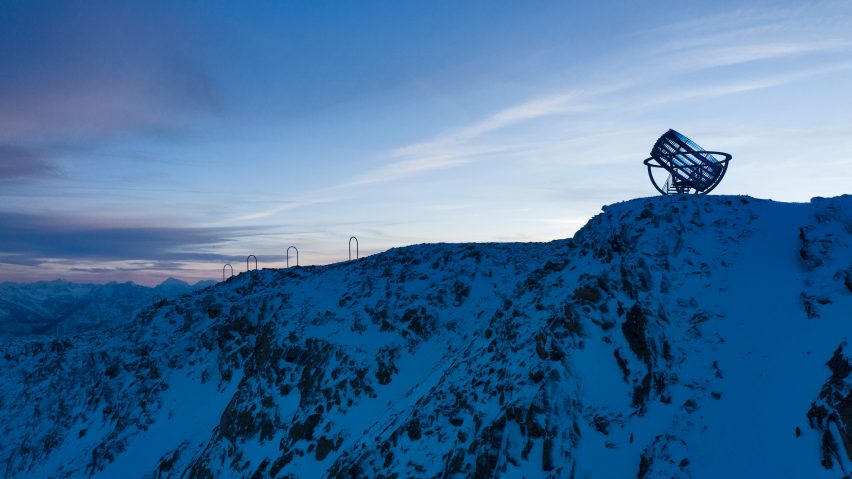
Olafur Eliasson perches giant astronomical instrument on top of glacier
Set on the summit of the Hochjochferner glacier in the Italian Alps, the latest artwork by artist Olafur Eliasson invites visitors to see manmade climate change from wider "planetary and glacial perspectives".
The installation is designed to resemble an outsized, walk-in version of an armillary sphere – a model of the universe dating back to antiquity, in which interlocking brass rings are arranged into a globe to represent the movement of different celestial bodies around the Earth.
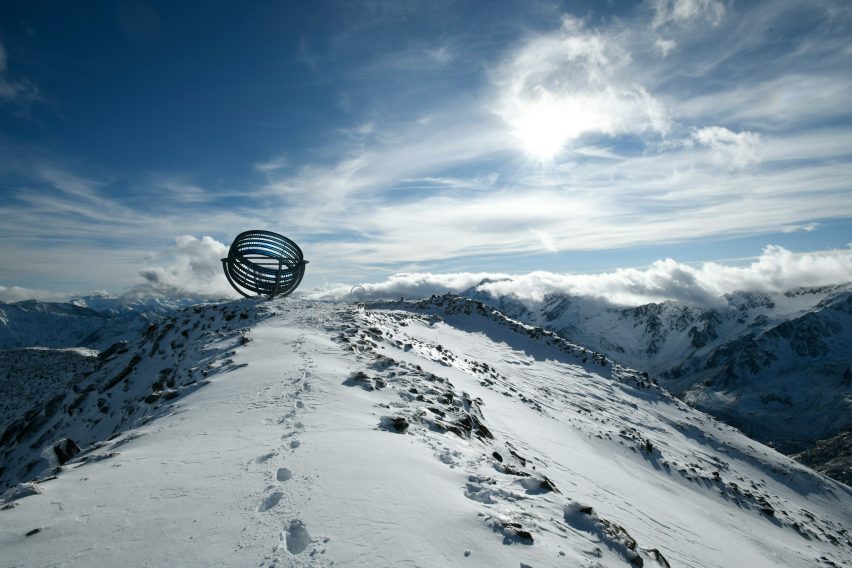
In this case, these rings are rendered in steel and blue-tinted glass and arranged around a circular viewing deck.
With their help, those standing at the centre of the platform can mark the line of the horizon and the cardinal directions, as well as tracking the movement of the sun over the course of the day.
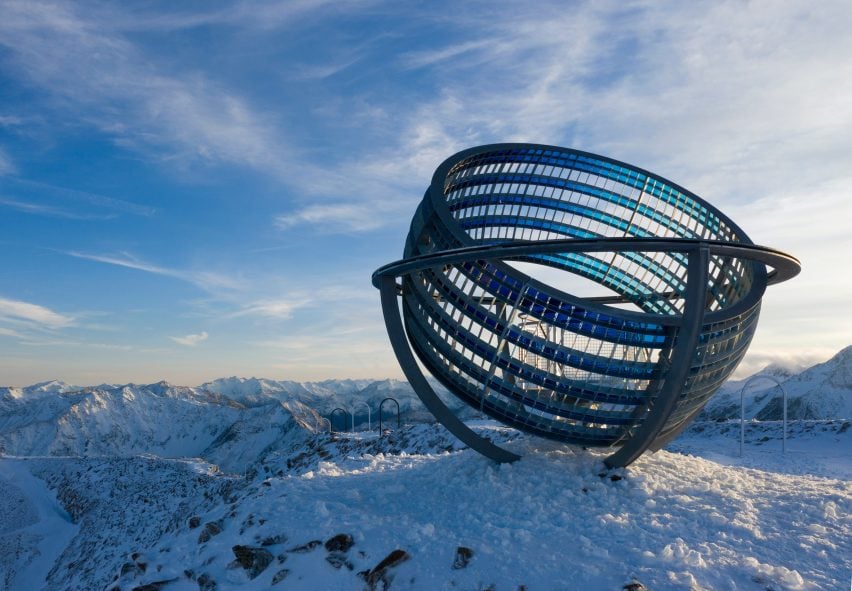
Called Our Glacial Perspectives, the pavilion is to intended to turn global warming from an abstract concept to something tangible and immediate.
"The location brings the visitor into contact with a glacier that is directly threatened by climate change," Sebastian Behmann, the head of Studio Olafur Eliasson's design department, told Dezeen.
"There is a good deal of evidence suggesting that direct experience is more effective in convincing us of the reality of climate change than reading about something from afar."
The reality is that since 1850, alpine glaciers have lost 40 per cent of their surface area and half of their volume, reducing their ability to reflect sunlight back into space and further accelerating warming.
As a result, temperatures in the Alps have warmed by two degrees Celcius over the last century, while global temperatures have only risen by one degree.
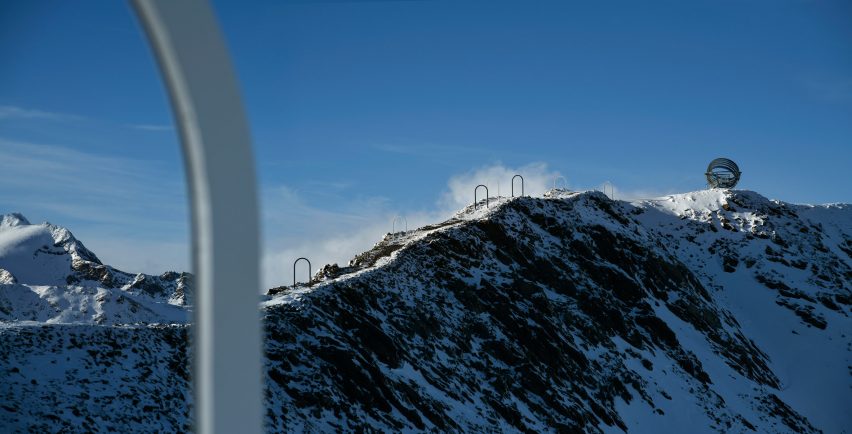
To draw attention to this, the 410-metre-long path leading up to the installation along the glacier's jagged ridge is interspersed with nine metal arches.
Five of these are white, representing the five ice ages in Earth's history while four black ones demarcate the periods in between.
The distance at which they are positioned roughly corresponds to the actual duration of the different ice ages, acting as a timeline of the planet and the ice that has been essential in cooling it to make it habitable for humans.
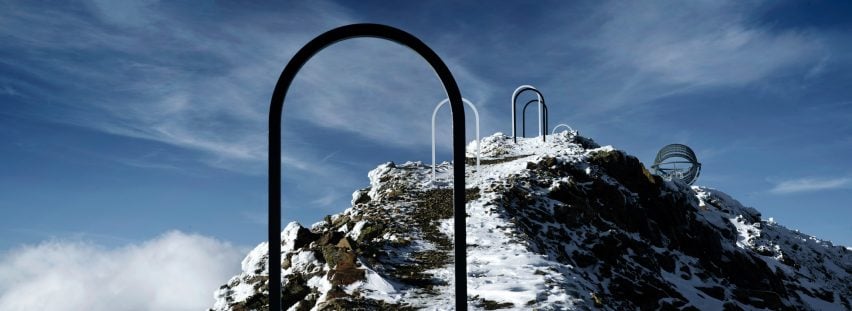
The pavilion itself is designed to give visitors the rare chance to consider the planet and humanity's actions within the larger context of the universe.
"Standing within the pavilion, the visitor's attention is directed towards the sun as it moves across the sky in relation to the earth," said Behmann.
"The work offers an amplifier for our experience of the movement of the world in relation to the universe beyond, giving us a space for contemplating deep time."
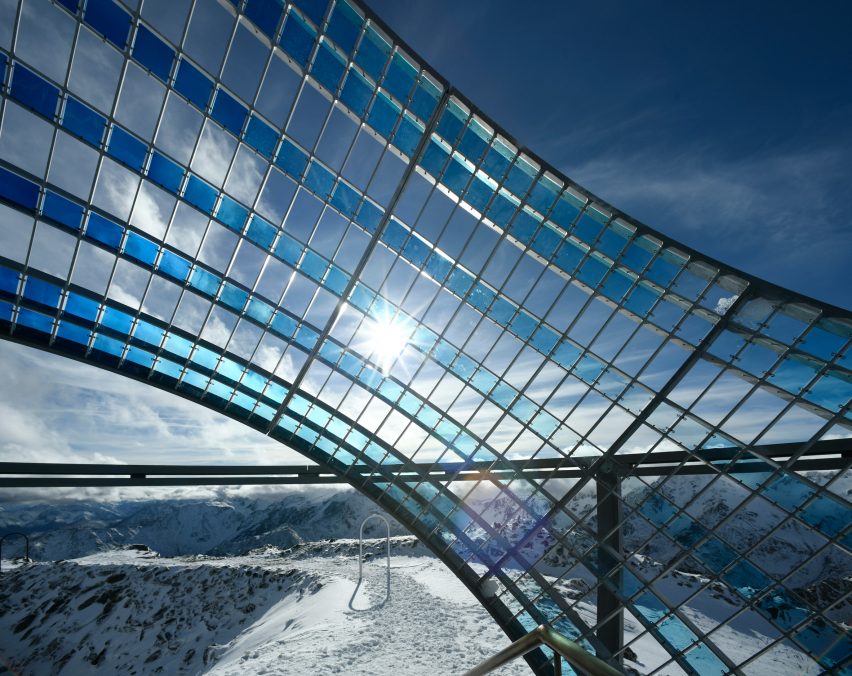
A diagonal band of 11 rings, encircling the viewing platform, traces the path of the sun across the sky on any given day of the year, with the topmost ring marking its movements on the longest and the bottommost one on the shortest day of the year.
The rings are divided by rectangular glass panes, each of which takes the sun 15 minutes to traverse by sight, effectively allowing the observer to tell the time of day.
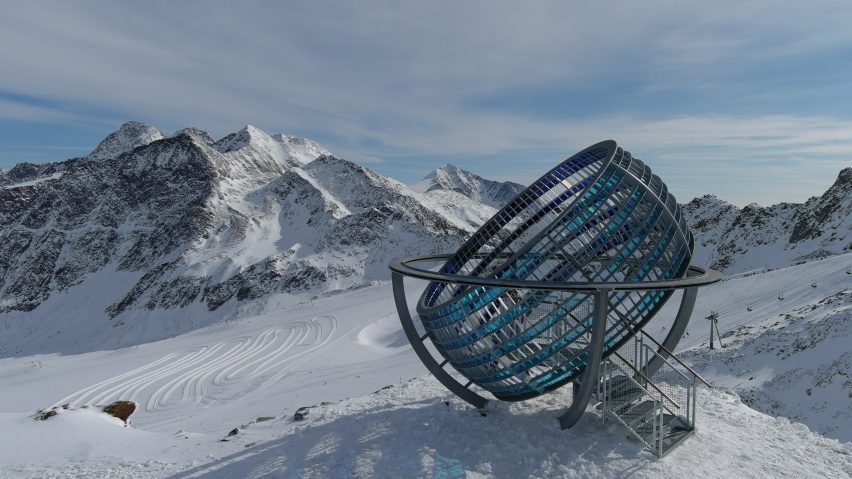
Two steel semi-circles embrace the viewing platform from below, pointing to the cardinal directions of north, east, south and west, as well as propping up two parallel steel rings that encircle the line of the horizon.
"The artwork acts as a magnifier for the very particular experience of time and space that this location affords – vast and boundless on the one hand, local and specific on the other," said Eliasson.
"It is an optical device that invites us to engage, from our embodied position, with planetary and glacial perspectives."
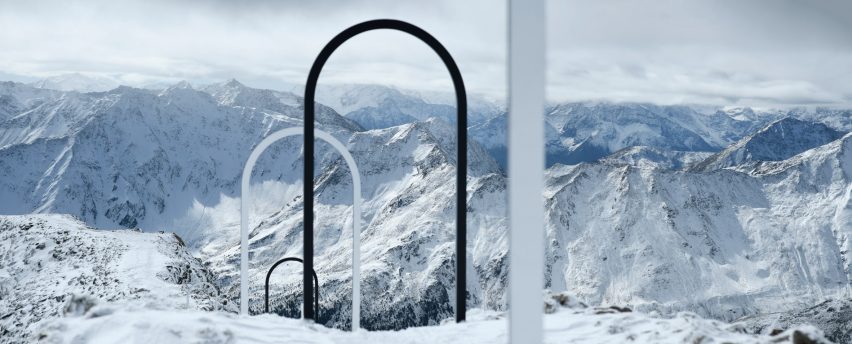
The installation was commissioned by the Talking Waters Society, a platform for exchange about water as "our most powerful and precious resource".
Eliasson has a long history of addressing climate change in his work, famously installing blocks of glacial ice in public spaces around London.
Most recently, he has also developed an augmented reality app that lets children speak up on behalf of the planet.
Photography is by Oskar Da Riz unless otherwise stated.